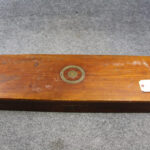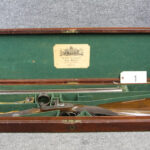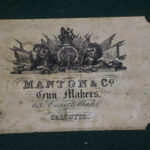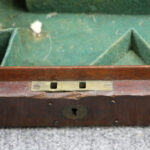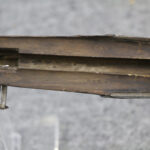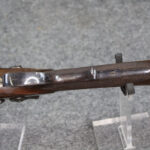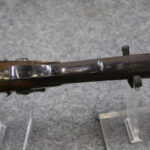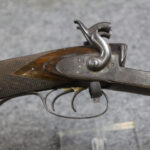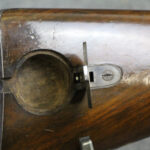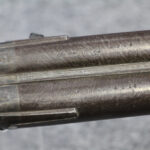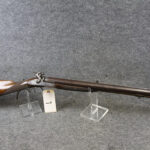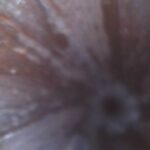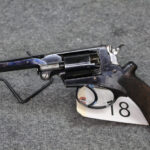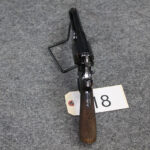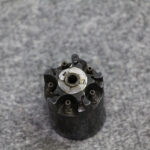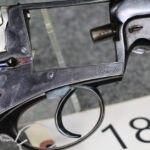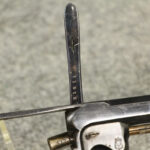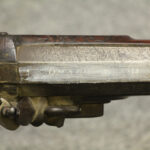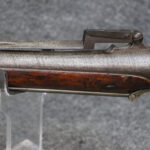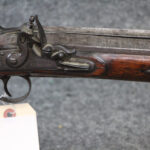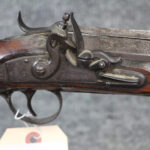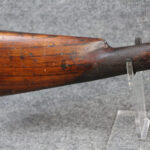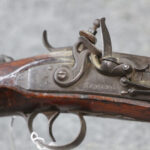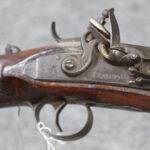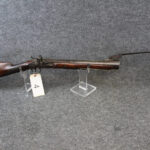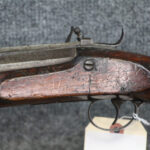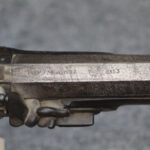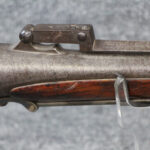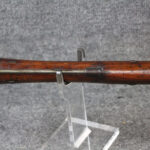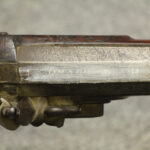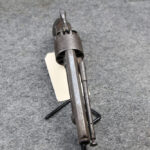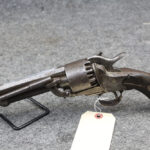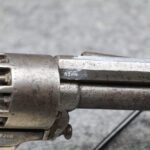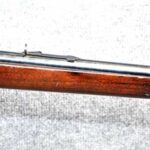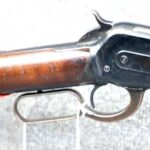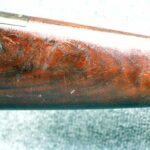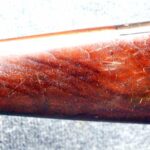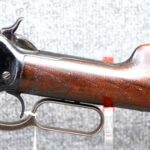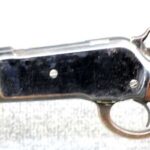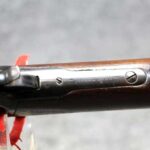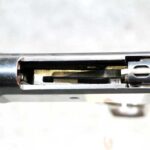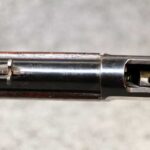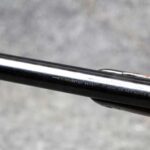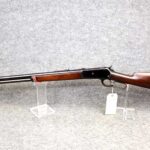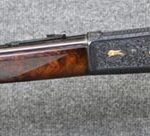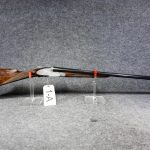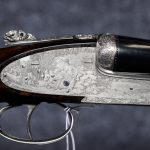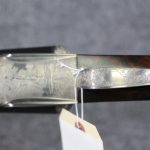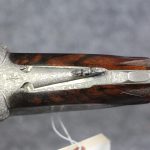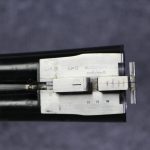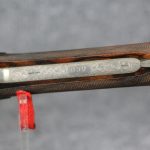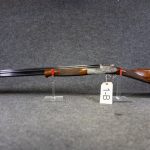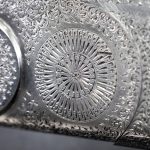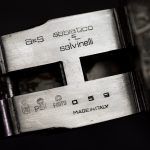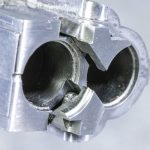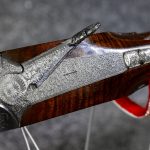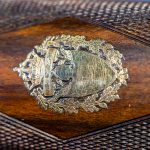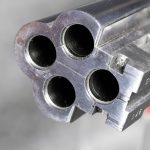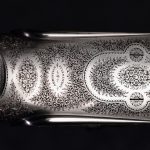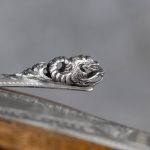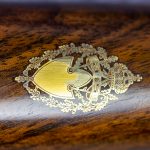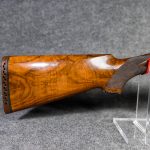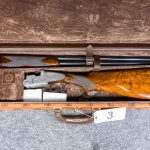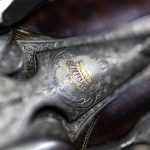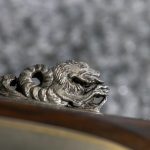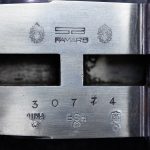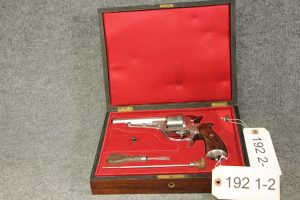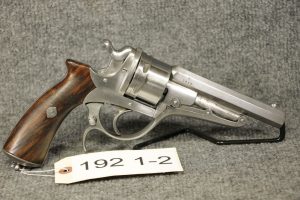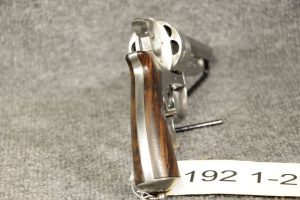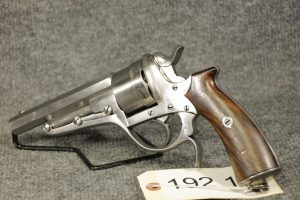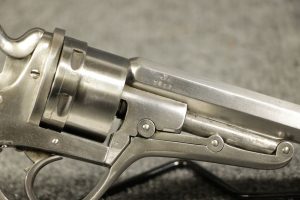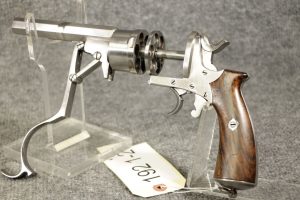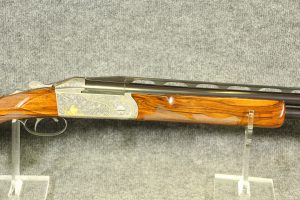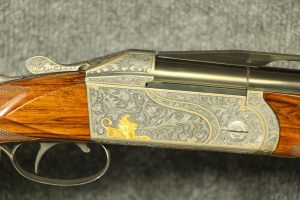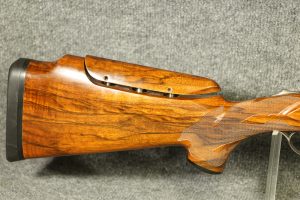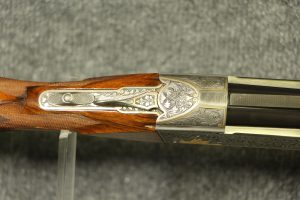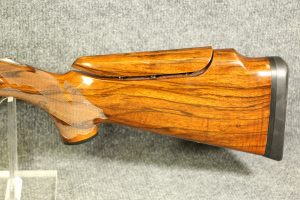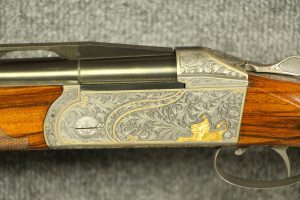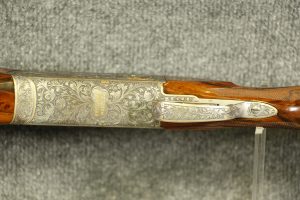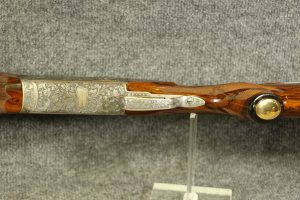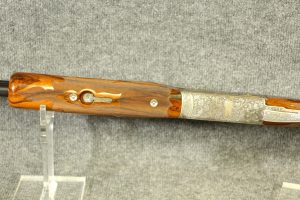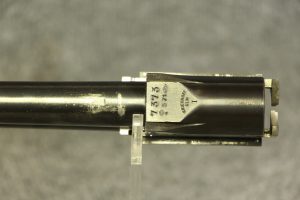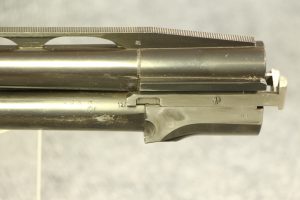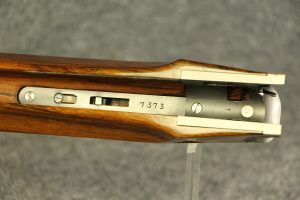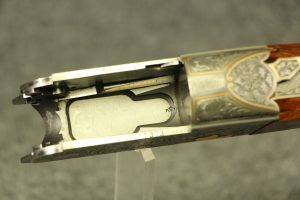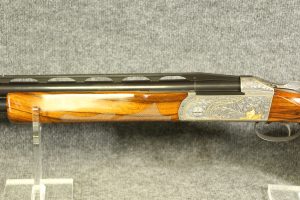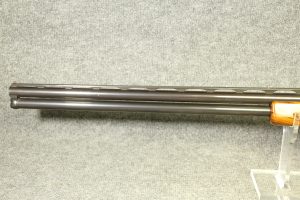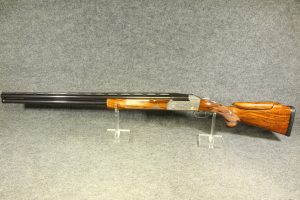This is the gun used by Ed Harris in the character he plays in the series West World. The distinctive firearm, also referred to as the “Grape Shot Revolver,” originated in New Orleans in 1856 through the collaborative efforts of Jean Alexandre Le Mat and the support of P. G. T. Beauregard, who later rose to the rank of general in the Confederate States Army. John Krider of Philadelphia, Pennsylvania, manufactured fewer than 100 units, including the initial 250 prototypes, in 1859. Additional production, estimated at 2,900 units, took place in Liège, Belgium, and Paris, France. These European-manufactured pistols underwent proof-marking in Birmingham, England, before distribution. Around 900 revolvers were supplied to the Confederate States Army, with another 600 sent to the Confederate States Navy via Bermuda to bypass the Southern Naval Blockade.
LeMat’s revolver stood out due to its unique design featuring a 9-shot cylinder revolving around a larger central barrel. This central barrel, being smoothbore, could double as a short-barreled shotgun. A lever located at the hammer’s end allowed the shooter to select between firing from the cylinder or the smoothbore barrel. Flipping the lever up discharged the lower barrel, while leaving it in the standard position would fire the chambers in the cylinder.
The initial Paris-manufactured 1st Model LeMats were chambered for .42 caliber projectiles in the cylinder and featured a .63 caliber smoothbore barrel. They were equipped with a jointed ramrod on the right side of the frame for loading both barrels. Later, during the American Civil War, a variant with a .35-caliber pistol and a .55-caliber smoothbore barrel was introduced. However, due to the non-standard ammunition sizes, LeMat owners had to cast bullets instead of relying on standard military stores, which usually carried .36 or .44 caliber ammunition for contemporary revolvers. In response to criticisms, the final models were produced in .36 or .44 caliber, although few of these managed to reach the South during the Civil War due to the Union blockade.
This LeMat I would grade at a 5. The charger is a bit loose. The hammer only half cocks. The wood grips are cracked and split. The serial number is 8206.
Bidding starts at $3,000. Buy it right now for $4,500. (good May 20th.) Select email below to register your bid.
Bids will be accepted until May 20th 2024 at which time the successful bidder will be notified. We will periodically update this page to show current bids.
Charges: There is a 10% bidder’s fee, taxes and shipping if necessary.
We guarantee authenticity for 30 days following the shipping/pick up date for full refund.
The Model 1886 continued the trend towards chambering heavier rounds, and had an all-new and considerably stronger locking-block action than the toggle-link Model 1876. It was designed by John Moses Browning, who had a long and profitable relationship with Winchester from the 1880s to the early 1900s. William Mason also contributed, making some improvements to Browning’s original design. In many respects the Model 1886 was a true American express rifle, as it could be chambered in the more powerful black powder cartridges of the day, proving capable of handling not only the .45-70, but also .45-90 and the .50-110 Express “buffalo” cartridges. The action was strong enough that a nickel-steel barrel was the only necessary modification needed to work with smokeless powder cartridges, and in 1903 the rifle was chambered for the smokeless high-velocity .33 WCF cartridge.
Make: Winchester
Model: 1886
Caliber: 38-56
Barrel length: 25 1/2″.
Ser. #69433
DOM: 1892
Condition: 7
During the early stages of World War I, the Royal Flying Corps purchased Model 1886 rifles chambered for the .45-90 Sharps cartridge with special incendiary bullets designed to ignite the hydrogen gas in German airships.
This is a marvelous example of the 1886. There are some screw burrs and handling marks. No visible rust, major scrapes nor cracks in the stock. Expected patina discoloration. Comes with 20 rds of factory ammunition.
Terms:
Feel free to call us to arrange a personal inspection.
Bidding starts at $3,000. Buy it right now for $4,500. (good Feb. 9th.) Select email below to register your bid.
Bids will be accepted until February 6th 2024 at which time the successful bidder will be notified. We will periodically update this page to show current bids.
Charges: There is a 10% bidder’s fee, taxes and shipping if necessary.
We guarantee authenticity for 30 days following the shipping/pick up date for full refund.
45-70 Winchester: 1886
This model 1886 was manufactured by Winchester in 1901. The engraving was likely done in the 1950’s and was performed by artisan John E. Warren. (see below). In honour of the designer of this and many other Winchesters, there is a raised engraving of John Moses Browning on the underside of the receiver. In honour of our kindred aboriginal brethren, there is a raised engraving of a native with a raised buffalo head.
We have gone over this piece and despite a tiny mark on the barrel right side about 4” from the muzzle, there are no other marks on this.
The checkering is very fine and the wood is AAA black curly walnut. Comes with the issue tang peep sight and regular field sights. The barrel is now browning from patina. No rust anywhere.
The figures are raised gold, copper and silver.
We estimate to have this quality engraving would now cost in excess of $45,000.
Caliber: 45-70
Barrel length: 21 ½”
Serial number: 125054
About the 1886 Winchester
The Winchester Model 1886 was a lever-action repeating rifle designed by John Browning to handle some of the more powerful cartridges of the period. Originally chambered in .45-70 Government, .45-90 Sharps, and .40-82 Winchester, it was later offered in a half dozen other large cartridges, including the .50-110 Winchester.[1] Despite being originally designed for use with black powder, the action was strong enough to make the jump to smokeless powder with only minor modifications, and was subsequently chambered in the smokeless .33 Winchester cartridge beginning in 1903.
History
The Model 1886 continued the trend towards chambering heavier rounds, and had an all-new and considerably stronger locking-block action than the toggle-link Model 1876. It was designed by John Moses Browning, who had a long and profitable relationship with Winchester from the 1880s to the early 1900s. William Mason also contributed, making some improvements to Browning’s original design. In many respects the Model 1886 was a true American express rifle, as it could be chambered in the more powerful black powder cartridges of the day, proving capable of handling not only the .45-70, but also .45-90 and the .50-110 Express “buffalo” cartridges. The action was strong enough that a nickel-steel barrel was the only necessary modification needed to work with smokeless powder cartridges, and in 1903 the rifle was chambered for the smokeless high-velocity .33 WCF cartridge.
About the Engraver
John E. Warren of Eastham, Mass. was born in 1904 and was considered one of the finest American engravers of his time. He primarily worked in the German style of scrollwork but was also very capable of English and American styles of scroll. His scenes and figures were of exceptional quality.
JEW’s work was featured in several publications from the 1950’s up until the time that I featured him on pages 169 and 170 of American Engravers in 1980. At that time he was semi-retired and would only except commissions from long time patrons.
Terms:
Bidding starts at $12,000. Click the email below to register your bid.
Feel free to call us to arrange a personal inspection.
Bids will be accepted until February 6th 2024 at which time the successful bidder will be notified. We will periodically update this page to show current bids.
Current bid $12,000,$14,000, $16,000, $17,000.
Charges: There is a 10% bidding fee, taxes and shipping if necessary.
We guarantee authenticity for 30 days following the shipping/pick up date for full refund.
Call now to arrange a personal viewing or email gord@gtaauctions.com
FAMARS, or Fabbrica Armi d’Abbiatico e Salvinelli, is an Italian gunmaker that manufactures bespoke shotguns and rifles. The company is best known for its patented detachable-lock designs and handcrafted woodwork and engraving. FAMARS is considered one of the top Italian gun manufacturers.
The name FAMARS is an acronym for Fabbrica Armi di Mario Abbiatico e Remo Salvinelli (Arms Fabrications of Mario Abbiatico and Remo Salvinelli).
In 1967, Mario Abbiatico and Remo Salvinelli became part of the famous Gardone Val Trompia gun tradition when they founded FAMARS. Both the Salvinelli and the Abbiatico families had history in the craft going back several generations. Remo’s father, Felice Salvinelli, was an engraver in Brescia, where he first met Mario’s father, Giuseppe Abbiatico, who was an actioner.
Initially, the company focused on smallbore shotguns ranging in quality and decoration. American businessman Joe Bojalad, a gun connoisseur and collector influenced the two founders to specialize in the fine gun category. In 1967, Bojalad was referred to FAMARS by another Italian gun manufacturer named Beretta. His request was an over/under shotgun with interchangeable barrels, adorned with engraving art. Upon receiving his first FAMARS gun, Bojalad was so impressed that he placed several more orders and became a lifelong client of Abbiatico and Salvinelli. In 1975 Mario and Remo, considering the advice of Bojalad, made the decision to focus solely on bespoke guns. Each gun produced thereafter was a bespoke gun bearing the name ‘Abbiatico & Salvinelli’ and a unique serial number.
The move to specialize in bespoke shotguns stimulated much innovation within the FAMARS factory in the following years. Inspired by Mario’s fascination with hammerguns, the Castore was created — the first-ever self-cocking hammer gun with a single trigger and automatic ejectors.The success and popularity of the Castore model prompted several other arms manufacturers to attempt imitations. In the late 1970s, shortly after the development of the Castore, FAMARS released the Quattrocanne, an original four-barrel model that fires with a single trigger. A limited run of only 30 guns were made, one of which is showcased in the historical Beretta Gallery in Italy, making FAMARS the only outside manufacturer to be shown within the gun gallery.
The next major innovation was the development of the Jorema, a Boss-style over/under shotgun that used a pinless sidelock design patented by Remo Salvinelli. This model drew on input from FAMARS’ long-time client Joe Bojalad. It incorporated several patented features. The Jorema concept would eventually evolve into the company’s flagship model, the Sovereign.
In the early 1980s, Mario and Remo released the Tribute, a side-by-side built with a detachable boxlock. The design was inspired by the Westley Richards side-by-side. This was the final model that Mario Abbiatico designed before he fell sick with cancer in 1984. From the late 1980s into the 2000s (decade), with Cristina Abbiatico now in charge, FAMARS would release several new models, including the most popular Excalibur, the Poseidon, and most recently, the Leonardo.
Abbiatico & Salvinelli Venere Lusso
Opening Bid: $25,000
(Bidding will continue for 4 months unless the buy it now price is paid)
Buy It Now: $30,000
Manufactured 1986. Engraved by Master Engraver Angelo Galeazzi (Diana of the Hunt) Signed 3 places.
Born in 1931 in Castegnato, Italy, Maestro Galaezzi was a leading light among contemporary Italian gun engravers and was one of the pioneers of what is commonly called the bulino technique of fine and highly detailed scenes and figures. Along with game scenes, Angelo was one of the earliest gun artists to engrave Diana and other neoclassical motifs on guns.
Abbiatico & Salvinelli 28 Bore
Opening Bid: $20,000
(Bidding will continue for 4 months unless the buy it now price is paid)
Buy It Now: $27,500
LOP 14 ½” to single trigger. Vent rib. Drop at heal 1 ¼” x 2 ½” cast off.
Sabatti engraved. Choked Cyl and Skeet. Manufactured 1986.
The Sabatti family has worked in the arms sector, passing on all the acquired experiences from one generation to the next. Nothing has been lost, and it is experience that gives Sabatti guns the quality that every shooter desires.
The company has grown a lot since the postwar period. Sabatti shotguns are continually improving and their quality is more and more responsive to the expectations of customers all over the world. Thanks to all this, Sabatti has conquered an important role in the global sporting gun industry.
Abbiatico & Salvinelli Rombo
Opening Bid: $25,000
(Bidding will continue for 4 months unless the buy it now price is paid)
Buy It Now: $32,500
410 bore. 4 27” barrels break action. Single trigger. LOP 14 ½” to trigger. Drop 1 ¼” x 2 ½” cast off.
Sabatti engraved. Manufactured 1976. Choked Cyl., Cyl., Full and Mod.
Beretta S3EL
Opening Bid: $8,500
(Bidding will continue for 4 months unless the buy it now price is paid)
Buy It Now: $10,500
12 bore 30” barrels. LOP 14 ½” to single trigger. Vent rib. Drop 1 ¼”x 2 ½” cast off. Manufactured 1974.
Abbiatico & Salvinelli Castore Hammer Gun
SOLD
(Bidding will continue for 4 months unless the buy it now price is paid)
SOLD
12 bore 29 ½” barrels. LOP 14 ¼” to front trigger. Top tang safety. Choked Full and Mod. Engraved by Angelo Galeazzi. Manufactured 1974.


